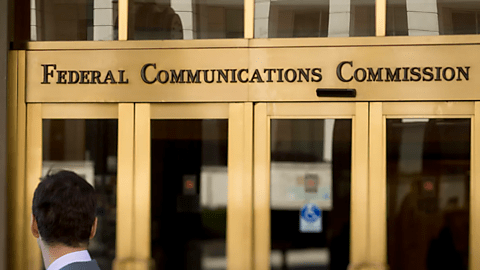Romina Boccia and Dominik Lett
To date, the US has committed about $114 billion in Ukraine‐related emergency funding, equivalent to the combined 2023 budget for the Department of Homeland Security and NASA. Should Congress decide to pass additional emergency funding, Ukraine aid plus interest could top $240 billion. With the US running excessively high deficits of 5.6 percent of gross domestic product (GDP) in fiscal year (FY) 2024 as debt projections are on track to exceed historic highs, Congress should fully offset new spending to avoid contributing to our nation’s deteriorating fiscal health.
With annual appropriations finally out of the way, Congressional attention is turning back to Ukraine aid. In February, the Senate approved a $95 billion foreign aid bill, which included about $60 billion for Ukraine. Recent reporting suggests House Speaker Johnson might pitch additional Ukraine funding as a loan. While there is a historical precedent for such war‐related loans, the proposal should invite skepticism. More on that below.
Tracking US Aid to Ukraine
Based on an appropriations deep dive by Elizabeth Hoffman, Jaehyun Han, and Shivani Vakharia at the Center for Strategic and International Studies, four supplemental bills account for $113 billion in humanitarian, financial, and war‐related emergency funding for Ukraine.
Most of the funding provided thus far has been military‐related, with the Department of Defense receiving $62 billion. The remaining funds are distributed across multiple agencies, with the second and third largest sums going to the United States Agency for International Development (USAID) and the Department of State.
Additionally, the latest round of discretionary appropriations provides a further $1.3 billion in emergency designations that the administration could use to respond to Ukraine or to support US allies in the region.
Passing the unmodified Senate foreign aid package of $60 billion for Ukraine would bring the total aid to $174 billion without interest. If we assume that all Ukraine spending will be borrowed, the cumulative debt‐servicing costs will reach $66 billion by 2034. In other words, the short‐term interest costs generated from failing to offset this spending will exceed the Justice Department’s entire 2023 budget. In total, we estimate that past and proposed Ukraine spending (plus interest) costs up to $240 billion.
It’s now been two years since Russia invaded Ukraine. If Congress is committed to supporting Ukraine over the long term, it should do so in a fiscally responsible manner.
Loaning Money to Ukraine
Recently, Speaker Mike Johnson suggested providing some portion of Ukraine aid via an interest‐free loan. The loan idea, originally pitched by former President Trump, is supposed to recoup the costs of new spending. Such ideas should be looked at skeptically.
Let’s consider the potential upsides. During the two world wars, the US provided loans to many countries, including the UK, USSR, and others. In most cases, countries paid their debts in full. Whether payment was provided in dollars or via other channels, the US could assist its partners and allies in conflicts without simply granting them blank checks. So, there is a historical precedent to the loan approach. Under the right circumstances, a loan could eventually claw back some of the money the US is effectively borrowing on Ukraine’s behalf.
Now, the problems. First, a loan to Ukraine would only offset a fraction of overall emergency spending. About $35 billion in the Senate foreign aid package concerns non‐Ukraine‐related aid, including funding for Israel and countering China. Second, Johnson and others have suggested a favorable, simple loan, including low or zero interest rates, to avoid overburdening the already financially stressed Ukraine. Given that the US would need to borrow any additional funds, US taxpayers would still get stuck with the interest costs.
Some lawmakers are further questioning whether Ukraine would be able to pay back such a loan, calling the proposal a political “fig leaf.” According to Sen. Mitt Romney (R‑UT), “It’s a distinction without much difference because it’s unlikely Ukraine would ever have [to] pay it back. It would be forgiven.”
Substantive Cuts, Real Offsets
There is no clever policy trick to offset new spending. Offsets require tough choices about what Congress wants to prioritize. Without cuts in other areas, the US would increase taxpayer deficits to provide new emergency funding. This new deficit spending will contribute directly to the nation’s mounting debt problem at a time when fiscal forecasts are gloomy, threatening America’s long‐term fiscal and economic security.
Here are four spending reforms that would produce real savings:
Rollback pandemic‐era programs. As of September 2023, $120 billion was unobligated in the Covid State and Local Fiscal Recovery Fund per the Economic Policy Innovation Center’s Paul Winfree. With the pandemic over, unspent COVID-19 funds should be rescinded to offset new spending. Likewise, the Employee Retention Tax Credit (ERTC) has been plagued with problems, including excessive cost overruns. As Cato’s Adam Michel has argued, “Over three‐quarters of that cost is likely a windfall to business owners and tax preparers.” According to the Committee for a Responsible Federal Budget, reforming the ERTC could generate $180 billion in savings.
Repeal farm subsidies. Federal subsidies for farm businesses and agriculture cost roughly $30 billion a year. As Cato’s Chris Edwards explains, “Farm subsidies are costly to taxpayers and can distort planting decisions, induce overproduction, and inflate land values. The programs discourage farmers from innovating and cutting costs, and they steer resources to households with incomes much higher than average US incomes.”
Cut the Small Business Administration (SBA). In FY 2023, the SBA spent $32 billion. Given the SBA’s questionable track record, transferring entrepreneurial development programs to the states or the private sector could be a sensible way to generate some cost savings. As Edwards points out, “State governments are in better financial shape than the federal government, and many SBA activities appear to duplicate activities provided in markets and the nonprofit sector.”
Alternatively, Congress could establish future offsets by adopting new discretionary spending limits and lowering the current Fiscal Responsibility Act (FRA) targets. The FRA, passed last June, set statutory caps on discretionary funding for FY 2024 and 2025. The FRA also includes nonbinding spending targets for four more years, equivalent to optimistic suggestions.
Congress could revise the FY 2025 topline to be lower than the FRA target and extend discretionary spending limits into the future. Congress should also establish a mechanism to track and automatically reduce discretionary spending limits to account for repeated emergency spending abuses, establishing offsets for emergency deficit spending as a matter of policy.
It is important to note that future offsets are more uncertain than immediate offsets because politicians often renege on future spending cuts for current spending increases. Case in point: to date, legislators have used a series of side deals, budget gimmicks, and emergency spending to bypass the topline limits outlined in the FRA.
The bottom line: Congress should offset additional deficit spending, including for domestic and foreign emergencies.
























